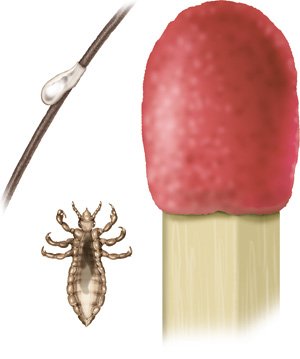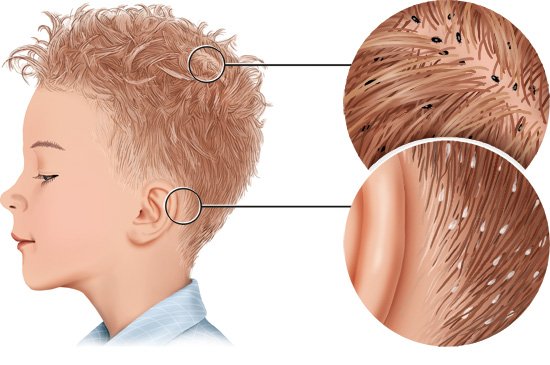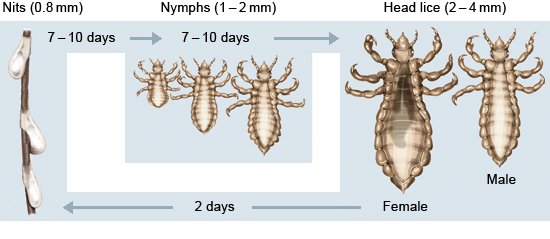You can check whether your child (or you) have head lice by using a special fine-toothed lice comb. There is no need to go to the doctor. Lice combs are available at pharmacies, drugstores or medical supply stores.
It is best to first wet the hair and then carefully comb it section by section, from the roots to the tips, at least twice. If the hair is long, curly, or particularly thick, it helps to apply hair conditioner beforehand so that the comb can move through the hair more easily. It is best to wipe the comb on a paper towel after each strand. This makes it easier to spot any head lice.
Full-grown head lice are 2 to 3 mm long. Their bodies are flat, wingless and grayish-brown in color. Unlike fleas, lice can't jump. But their six legs allow them to hold on tight to human hair and crawl along it. Because head lice are so small, it’s difficult to see them in thicker areas of hair. You can use a magnifying glass to help you find smaller lice.
Head lice usually lay their eggs (nits) along the hairline around the temples, on the nape of the neck or behind the ears. These stick firmly to your hair, usually close to the scalp (less than one centimeter away).
Other small objects found in hair, like dandruff or scabs, may be mistaken for lice. But they don’t stick to the hair and will fall out when shaken.




